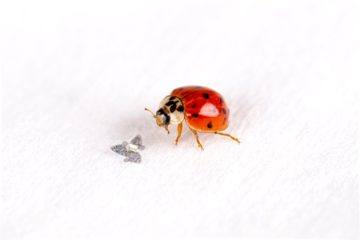Nikk Ogasa in Scientific American:
 As spring ends, maple trees begin to unfetter winged seeds that flutter and swirl from branches to land gently on the ground. Inspired by the aerodynamics of these helicoptering pods, as well as other gliding, spinning tree seeds, engineers claim to have crafted the smallest ever wind-borne machines, which they call “microfliers.”
As spring ends, maple trees begin to unfetter winged seeds that flutter and swirl from branches to land gently on the ground. Inspired by the aerodynamics of these helicoptering pods, as well as other gliding, spinning tree seeds, engineers claim to have crafted the smallest ever wind-borne machines, which they call “microfliers.”
The largest versions of these winged devices, which the researchers sometimes refer to as “mesofliers” or “macrofliers,” are about two millimeters in length, roughly the size of a fruit fly. The smallest microfliers are a quarter that size. That makes them tiny enough to drift like seeds—but still large enough to tote compact microchips with sensors that gather information about the devices’ surroundings and wireless transmitters that send these data to scientists. Swarms of microfliers could be dropped from the sky to catch the wind and scatter across vast areas, says John Rogers, a physical chemist at Northwestern University. “Then you can exploit them as a network of sensors to map environmental contamination, disease spread, biohazards or other things,” he adds. Rogers and his colleagues describe the machines in a Nature paper published on Wednesday.
To help their contraptions descend as sedately and stably as possible, the engineers started by analyzing the shapes of airborne seeds such as those of big-leaf maples, box elders and woody vines in the genus Tristellateia. Then they used computers to simulate the airflow around similar shapes with slightly different geometries. This process allowed the researchers to refine a variety of designs until the microfliers fell even more steadily and slowly than their botanical counterparts.
More here.
